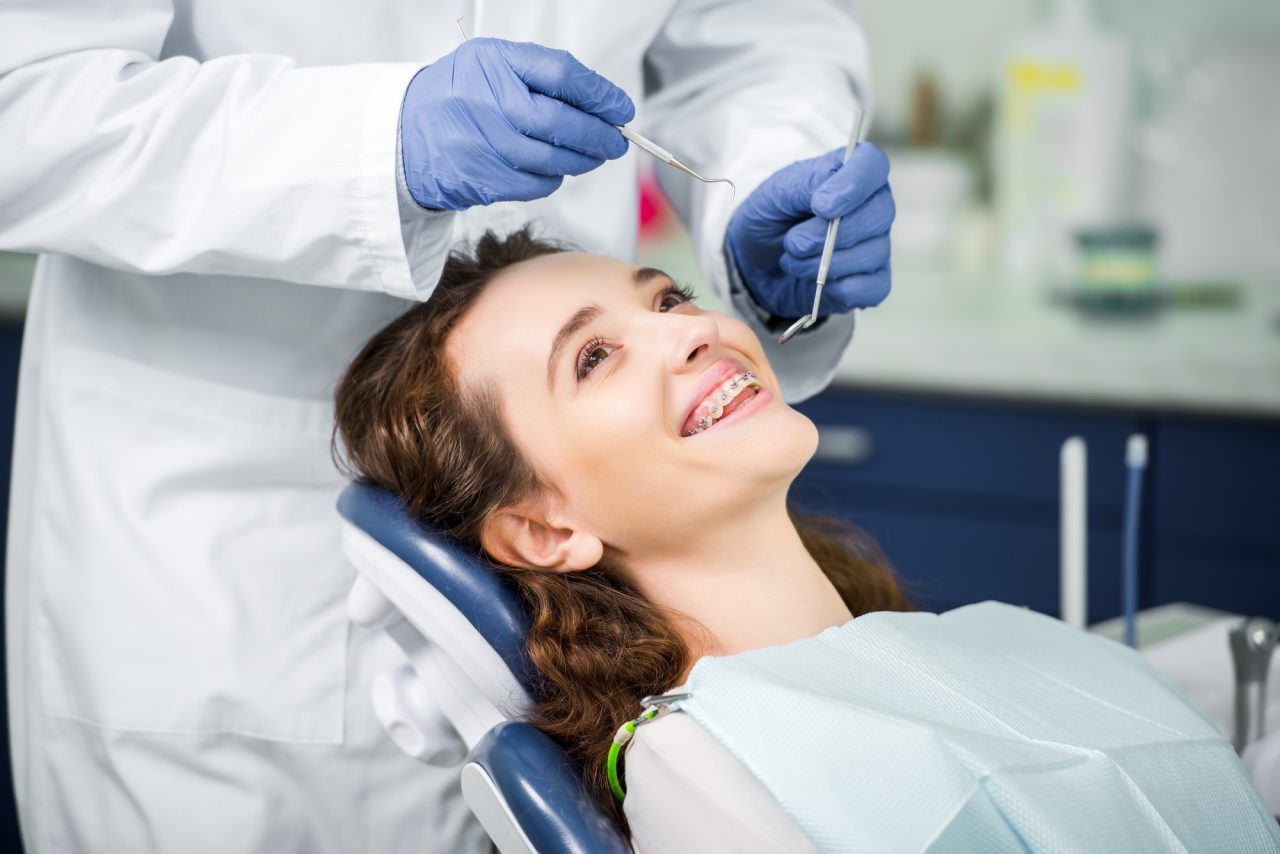
Our Expertise
Life with Braces
Looking to get rid of your crooked or “rabbit” teeth?
Braces might just be the solution for you.
While it is recommended to begin orthodontic treatment at an early age, braces are not just for children; they are also recommended for adults with overcrowded or crooked teeth as they help to correct a variety of orthodontic problems.
At Dentists Co, we offer metal or ceramic (clear) braces for those who prefer fixed braces. Here’s everything you need to know and what to expect when you get your braces.
1 Visit Every 2 Months
Safe & Predictable
Envision Your Smile
Benefits Of Wearing Braces
Having straight teeth not only gives you a more confident smile, but also helps with your overall oral health.
Healthier Gums
Braces can help you to maintain excellent oral hygiene as straighter teeth are easier to clean, brush and floss, helping to prevent future gum diseases and cavities.Helps with Digestion
Braces can help to improve digestion as straighter teeth can chew food into smaller pieces, allowing your stomach to digest the food more easily.
Improves Speech
In some cases, braces can improve speech ability. Misaligned teeth can cause unwanted speech impediments such as whistling, slurring or poor pronunciation of words.Eliminates Jaw-related Pains
Braces can help to improve jaw alignment. Misaligned teeth can cause jaw joints to compensate for bad positioning, which can result in headaches and jaw, neck and shoulder pain.Do You Need Braces?
Braces have successfully treated a broad range of cases from teeth crowding and underbites to jaw problems and teeth misalignment.
Here are some common orthodontic problems that braces are used to treat.
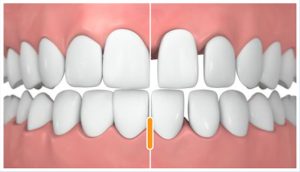
Spaced Teeth
Abnormal growth of jaw bone and gaps left by missing teeth can cause the surrounding teeth to shift and space out. These spaces expose our gum, which increases the risk of developing gum disease.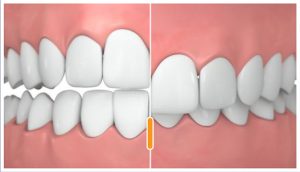
Underbite
Underbite occurs when the lower teeth protrude past the upper teeth. This prevents the functionality of front teeth or molars, which can lead to tooth wear and tear. It can also cause painful jaw and joint problems.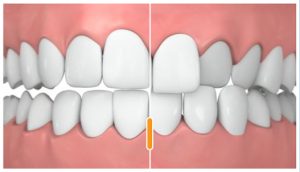
Crossbite
The misalignment of upper and lowers jaws causes one or more upper teeth to bite onto the inside of the lower teeth.
When a crossbite occurs on both the front and the sides of the mouth, it causes abnormal tooth wear and chipping, leading to other problems like gum disease and bone loss.

Overbite
Known as “overjet” among dental professionals, overbite occurs when the upper teeth bite over the lower teeth, which can lead to gum disease, chipped or fractured front teeth. Overbite can be caused by the overdevelopment of the bone that supports the teeth, and bad oral habits.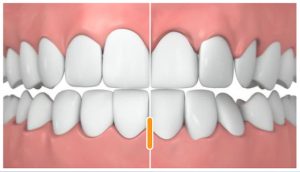
Overly Crowded Teeth
When there is no room to fit all your teeth within your jaw, your teeth tend to crowd together. If left untreated, these overcrowded teeth can accumulate plaque, causing tooth decay and increasing the risk of developing gum disease.Types of Braces
Depending on the condition of your teeth and your lifestyle needs, we will assess and determine the most suitable type of braces for you.
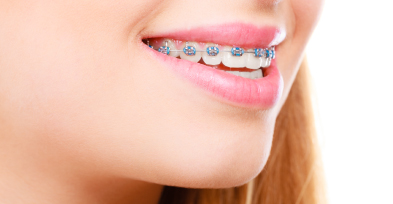
Metal Braces
Metal braces are made of high-grade stainless steel and attached to the teeth. These relatively thick braces are fixed (not removable), and it usually takes one to two weeks to get used to them.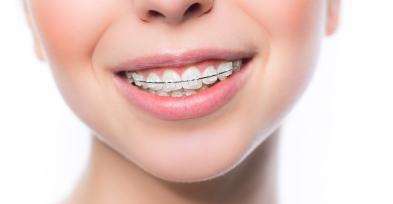
Ceramic Braces
Ceramic braces are tooth-coloured, blending in better with your natural teeth. They are stain resistant, relatively thick and will also take some time getting used to.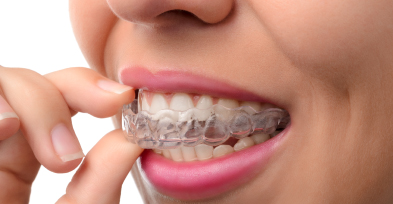
Invisalign
Invisalign are “invisible” braces made from a transparent and flexible material that gives them a discreet, natural appearance. These clear aligners are also removable, allowing for the convenient teeth cleaning and eating.Maintaining Your Braces

First Week with Braces
This will be an adjustment period for your teeth, where sensitive areas in your mouth (lips and cheeks) must get used to having metal or ceramic brackets cemented on to your teeth.
Maintaining Oral Hygiene
Keeping your teeth and gums healthy throughout your braces treatment is extremely important for your oral health.
FAQ
No. Braces are effective for both children and adults of all ages. Once a child has reached a certain level of teeth development, our dentist will advice parents accordingly for their child’s treatment plan.
We will take an x-ray and photos of your mouth and teeth, including the mould of your teeth to facilitate the planning of your treatment.
Teeth extraction largely depends on the complexity of your oral health condition. However, the need for extraction is now reduced with advancements in braces technology.
If tooth extraction is necessary, spaces left by extracted teeth will be sealed after your treatment.
The total duration of treatment depends on the complexity of your oral condition.
Typically, entire process of getting braces can last between 9 and 18 months. Your dentist will be able to provide you with more details during your consultation.
To prevent your teeth from shifting back to its original misaligned position, wearing retainers after getting your braces is highly recommended.
Process Of Getting Braces
The treatment duration for braces varies across individuals and the complexity of your current teeth condition.
1. Consultation & Diagnosis
During your first visit, your dentist will scan your teeth to create a digitalized image, which will then be used to plan out a precise treatment plan customised just for you.
2. Fitting of Braces
At your next appointment, you will undergo fitting for your braces. This process is painless and will take around 30 minutes. Your dentist will brief you on dos and don’ts (such as which foods to avoid) and the best way to take care of your teeth and braces.
3. After Getting Braces
Our dentists will review your teeth progress and oral health condition every 6 to 8 weeks. After completing the entire treatment, you will be given customised retainers to maintain the alignment of your teeth.
We Are Ready To Serve Your Various Dental Problems
Are you ready for a smile makeover that doesn’t just
change your face – it transforms your life?


